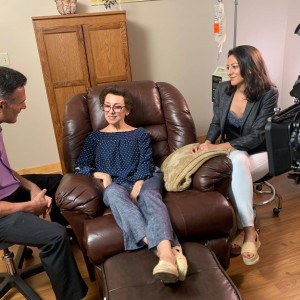
Cancer kills more than six hundred thousand people every year.
Though there have been great strides made in the fight against cancer, we are still losing the battle each year.
Cancer Affects All Kinds of People at All Ages
Even for public figures, celebrities and those who we would consider wealthy, there is no protection from the disease that confounds most experts.
Taking people like Peter Jennings, Farrah Faucet, David Bowie, Aretha Franklin, Paul Newman, Walt Disney, Dennis Hopper and countless more, in the midst of their prime, cancer does not choose only the elderly.
So many people have already died, from a disease that knows no age differences, from ten year olds, to thirty-somethings in their prime, to seniors, who were lucky enough to live a full life, before this terrible disease struck them down.
Cancer Trends
Although statistical trends are usually not directly applicable to individual patients, they are essential for governments, policy makers, health professionals, and researchers.
These statistics and trends enable us to understand the impact of cancer on the population, and to develop strategies to address the challenges that cancer poses to the society at large.
Many Patients Dying Of Cancer Try Useless Treatments
WebMD reports new research indicates that when given just one month to live, a significant number of patients still opt for aggressive and often costly interventions, despite little evidence to suggest they’ll help.
A study of just over 100,000 patients in the United States found that the urge to undergo ultimately fruitless cancer treatment “is not a rare phenomenon,” said study author Dr. Helmneh Sineshaw, of the American Cancer Society.
More than one-quarter underwent active treatment, such as surgery or chemotherapy, in the final weeks of life, said Sineshaw, director of treatment patterns and outcomes research for the cancer society.
For those affected, care planning can be very “complex.” Decisions involve a tricky interplay of doctors, patients and loved ones.
Though this is a challenging scenario for doctors and patients, oncologists have an obligation to inform their patients as best as they can about the prognosis, the goals of treatment, and the expectations for benefit and side effects from any treatment plan.
However, there is hope, from doctors like Dr. Mark Rosenberg, from the Healthy Living Group.
Dr. Rosenberg is an innovator with original ideas on how to combat this disease.
It is because of rare individuals like Dr. Rosenberg that progress is finally being made, and the long struggle against cancer may ultimately be won.
Why People Seek Out Dr. Rosenberg’s Methods
Cancer is a very personal disease. What we know about cancer and how to fight it and provide the best options for our patients is continually being supplemented or challenged by new and exciting studies.
Marina’s Story
Marina Ashville had complained of an odd type of lump stretch mark for years on her right breast, but was told by doctors not to worry because it was nothing. Finally she went for a sonogram with the urging of her daughter Anna. They were shocked to find out that Marina had stage 2 estrogen positive breast cancer.
In 2018, she began experiencing bone pain, which became persistent. A PET scan showed a large spread of disease in her bones. After new scans and tests, they would find Marina now had stage 4 cancer which spread to her bones. With the news, Anna her daughter, took six months off of work to step in and roll up her sleeves to be her mom’s advocate.
Anna decided to look outside the traditional box of standard care, in hopes of finding a new cutting edge direction that could offer her mother a better chance at life.
This journey would bring her to the offices of Dr. Mark Rosenberg, an integrative medicine doctor, who specializes in care for various stages of cancer patients.
So far, following the trail blazing approach of Dr. Rosenberg, Marina is thriving with his treatment regiments, and her pain has vanished.
In 2019, Emmy-award winner Director and Producer Keith Famie will dedicate his next film to the ravages of cancer, giving a voice to those who are in the midst of a terrifying journey.
He will explore the latest medical advances as well as body, mind and spirit approaches and cures that may come from natural sources. An in-depth look will be taken as to how lifestyle changes and discipline can affect what may otherwise be a genetic roll of the dice.
As with all of Keith’s documentaries, the production will contrast real-time stories of cancer patients with those on the front-line of researching cures. The newest approaches will be examined, including advancements being made in chemotherapy and holistic medicine.
As an Emergency Room physician, Dr. Mark Rosenberg saw all kinds of patients, but when his mother came in complaining of pain it was a shock when he diagnosed her with stage four metastatic cancer after reviewing the scans of her lungs.
That was 16 years ago. Since that moment, Dr. Mark felt lost at this time in not being able to help his mother.
So he decided to dedicate the rest of his career to treating cancer patients through an integrative medical approach.
How Dr. Rosenberg Helps His Patients Stay Alive
Mark A. Rosenberg, MD is President and Medical Director of Advanced Medical Therapeuetics and Integrative Cancer Therapeutics in Boca Raton, Florida.
He is also Program Director of Integrative Cancer Fellowship, Chief Medical Officer of Laboratory for Advanced Medicine, as well as Co-founder of Channel Therapeutics LLC and Co-founder of High Point Therapeutics LLC. With the Adaptive Cancer Care Essentials Program (ACCEP) which Dr. Mark Rosenberg created to serve the medical community, he uses his discoveries with Immunotherapy, low dose metronomic chemotherapy, off-label use of medicines, IV Vitamin C, hyperthermia, nutraceuticals, and more, to bring relief to his grateful patients.
Dr. Rosenberg is leading the cutting edge helping his patients live with their cancer in an ongoing manner.
Dr. Rosenberg’s ongoing advances have changed the way both doctors and patients think about addressing and living with cancer.
Whether you are a doctor in the fight against cancer, a cancer patient, or a family member fighting the fight right alongside your loved one…
It pays to get the all the details Dr. Rosenberg has uncovered…
To help cancer patients live with their cancer.
Discover more about the ACCEP Program Today.
healthyliving October 21st, 2019
Posted In: Cancer Prevention

healthyliving August 15th, 2019
Posted In: cancer care
Tags: all-trans-retinoic acid, ATRA, immune, immune response, MDSC, melanoma, myeloid derived suppressor cells, research, retinoic acid, stem cells, study, tumor, tumor progression
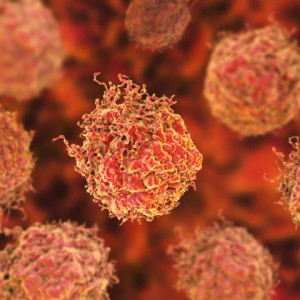
Prostate cancer ultrasound treatment as effective as surgery or radiotherapy – an article by Imperial College London.
This is a ground-breaking and game-changing study for males. For may years, the only curative treatment for males with prostate cancer that had not spread outside the prostate was surgery or radiation therapy.
healthyliving July 23rd, 2019
Posted In: cancer care
Tags: cancer, HIFU, high-intensity focused ultrasound, prostate cancer, radiotherapy, research, surgery, ultrasound
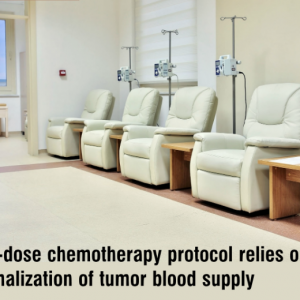
healthyliving July 8th, 2019
Posted In: cancer care
Tags: chemotherapy, low dose, low-dose chemotherapy, maximum tolerated dose, tumor, tumor treatment

Testosterone Research Brings New Hope for Cancer Patients – an article from Science Daily.
This is certainly not the first article published on the benefits of anabolic steroids for cancer cachexia. Anabolic steroids, such as testosterone and nandrolone, not only reduce muscle wasting, they also increase erythropoietin release, thereby mitigating the anemia and fatigue associated with maximum tolerated dose regimens. This affords the patients less transfusions, as well as a decreased need for erythropoietin stimulating agents, which have shown to increase mortality in cancer patients.
Commonly recommended drugs for appetite stimulation, such as progestins, corticosteroids, and dronabinol, are minimally and transiently effective. In addition, there is no risk of promoting the aggressiveness of the cancer with anabolic steroids if the cancer does not possess androgen receptors. To the contrary, breast cancer survivors who received subcutaneous implants containing testosterone in combination with a low dose of anastrozole for relief of menopausal symptoms, have had no recurrence of cancer after eight years of testosterone therapy.
Bottom line: consider the use of anabolic steroids for cancer cachexia, as long as the cancer does not possess androgen receptors, such as prostate cancer and often triple negative breast cancer.
healthyliving June 20th, 2019
Posted In: cancer care
Tags: anabolic steroids, cancer, cancer cachexia, cancer care, nandrolone, testosterone
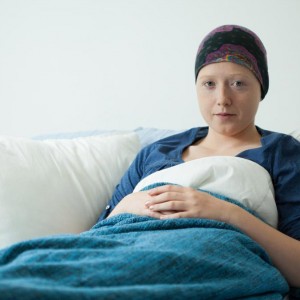
New Research Finds That Routine Breast Cancer Tests Lead to Unnecessary Mastectomies and Chemotherapy – an article from Cancer News.
This article may temper the celebrity-endorsed enthusiasm for prophylactic mastectomies for those with BRCA mutations. In addition, another study out of Duke Cancer Institute followed women with a BRCA mutation who had been diagnosed with ovarian cancer, with one group having prophylactic mastectomies, and the other group receiving routine screening (mammograms/MRIs); you can read the article here.
Results: For women diagnosed at any age with BRCA 1 and 2 gene mutations and within the first four years after ovarian cancer diagnosis, prophylactic mastectomy was associated with a negligible gain in survival. For women diagnosed at age 60 or older, regardless of time since ovarian cancer diagnosis, the gain in survival months was also negligible. For women diagnosed at age 40 to 50 with BRCA 1 and 2 mutations and at least five years after an ovarian cancer diagnosis, the procedure was associated with a survival benefit of two to five months.
Bottom line: Although prophylactic mastectomy in BRCA gene mutation carriers has shown to decrease breast cancer incidence, the data does not confirm an increase in survival.
healthyliving June 11th, 2019
Posted In: cancer care, Cancer Prevention
Tags: breast cancer, cancer, chemotherapy, mastectomy, new research, research, study
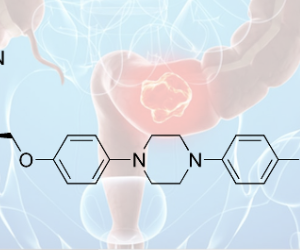
healthyliving May 28th, 2019
Posted In: cancer care
Tags: antifungal, antifungal agent, breast cancer, cancer, colorectal cancer, III NSC lung cancer, itconazole, lung cancer, NSC lung cancer, ovarian cancer, prostate cancer
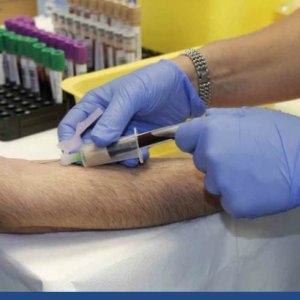
healthyliving May 14th, 2019
Posted In: cancer care, Cancer Prevention
Tags: cancer, cancer care, immunotherapy, oncolytic virus, OV, OV therapy, rigvir
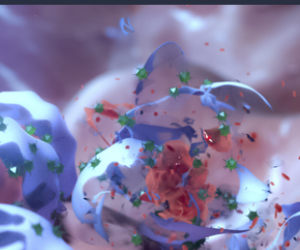
Personalized cancer vaccine may increase long-term survival in patients with deadly brain cancer — an article from Science Daily.
Unfortunately, with all of our new cancer drugs, we have been unable to improve survival for patients with glioblastoma (GBM). Northwest Biotherapeutics, Inc uses a personalized vaccine, by taking the patients’ tumor, and making a lysate from it. The brain tumor tissue lysate is then combined with the patients’ own dendritic cells, so the dendritic cells can “learn” what it needs to attack. These matured cells are then injected back into the patient.
Using this technique, we are seeing improved survival for GBM, certainly compared to any other modalities. When we sit back and attempt to discern the “big picture” in treating cancer, we keep coming back to the same concept: each patient with cancer must be treated uniquely and individually, because each cancer is a unique disease to each individual. In the future, if a patient presents to you with GBM, consider sending them for a clinical trial with Northwest Biotherapeutics, Inc.
healthyliving April 23rd, 2019
Posted In: cancer care
Tags: brain cancer, cancer, GBM, personal vaccine, survival, vaccine